2021 BMW R18 review: An American cruiser through a Bavarian lens
Do you know what
Harley-Davidson’s
largest market is outside of the United States? You’d be forgiven for guessing it’s China, since so many other American brands have found such great success there as of late. Or perhaps India, a place with somewhere near 40 million
motorcycles
on the road. Neither, however, is correct.
The answer is Germany, a fact I provide not to ensure you’re well-prepped for the next trivia night at your local bierhaus, but because knowing that fact is key to understanding not only why the R18 exists, but indeed why it is the way it is.
The
BMW
R18 is a long, low, slow and beautiful cruiser. At about $18,000 to start, it’s also quite expensive. This is, in many ways, a Bavarian-built Harley, a machine designed to fend off that Milwaukee presence on the Autobahn. If that sounds like a curious proposition, it is, but it’s also a well-executed one.
You have to start with the look, which is something like a cruiser caricature of BMW’s iconic R series of motorcycles. My test bike is painted black with white pinstripes, an understated scheme for such an outrageously designed bike, but a look that is, for Beemer fans at least, as iconic as a pair of pistons sticking out the frame at odd angles.
Indeed the pistons are horizontally opposed on the R18, something a legally blind individual could easily tell from 100 yards away. BMW owners often call the cylinders on their bikes jugs but these are bigger than a gallon by far, wrapped in chrome and cooling fins and sprouting a giant exhaust pipe that sweeps forward before turning back and flaring into an almost laughably huge muffler. Somehow, though, the styling works.
Between the cylinders sits the heart of the machine, an engine faced by yet more chrome and its own inset BMW logo. There’s no radiator here to hide the simple frame or the perhaps overwrought details of the motor, just a little oil cooler situated down low where you’d barely notice.
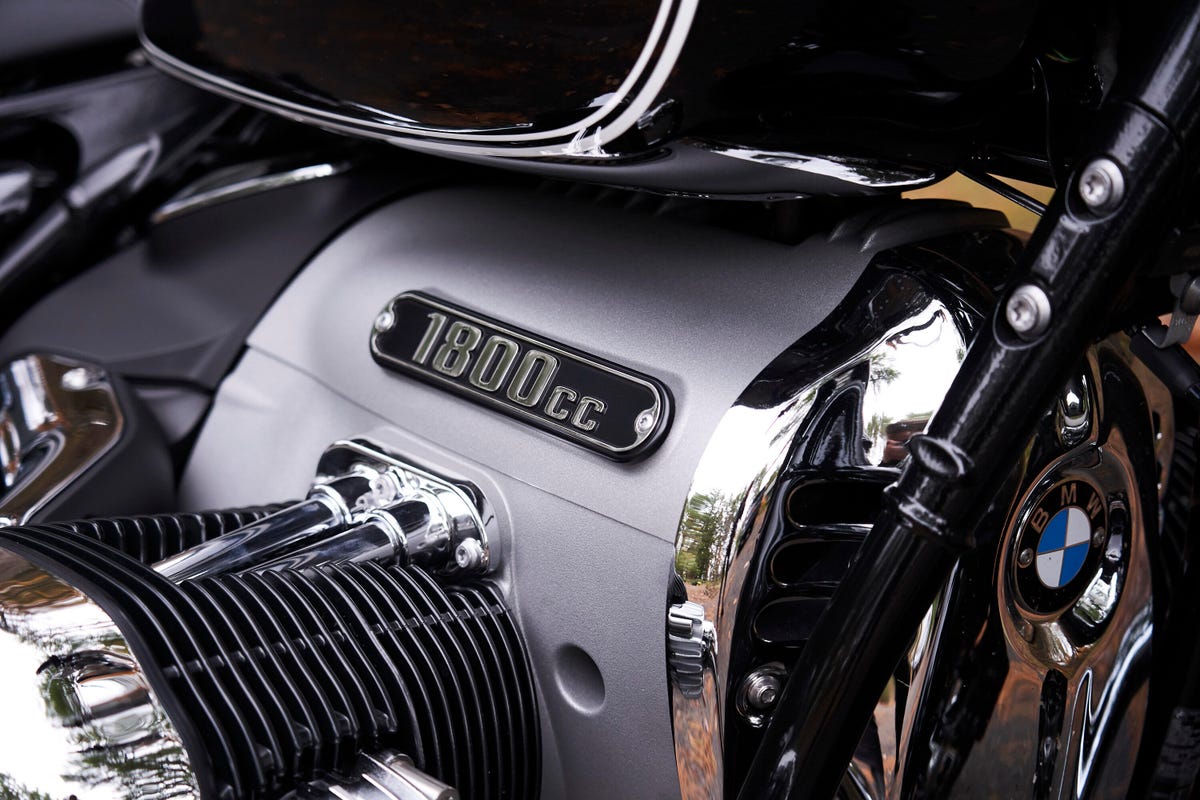
Handily fends off the inevitable “How big’s the motor on that thing?”
If you had any doubts about the sheer mass of that engine, the giant “1800cc” badges on either side quickly put that to rest. Large in displacement, yes, but not necessarily output. BMW’s 1,802-cc lump is officially rated at 91 horsepower and 116 pound-feet of torque. I’m tempted to compare this to a modern performance engine, like the 1,103-cc V4 that makes 214 hp in the Ducati Panigale V4 S — more than twice the power from an engine that’s 60% the size — but that’s a bit unfair.
A better comparison might be to another air-cooled BMW, like my 1965 R69S and its 594-cc, air-cooled, horizontally opposed twin. New, that bike was rated for 35 hp. Do the math and you’ll see that’s slightly less than one-third the displacement yet more than one-third the power. How far we’ve come in 55 years. But, to circle back to the Harley-Davidson comparison, this motor could perhaps best be set against the Milwaukee-Eight 114 found in the 2020 Fat Bob and others. That 1,870-cc engine does 86 hp and 119 lb-ft of torque — right in line with the R18.
Numbers are unimportant compared to how a thing feels, and suffice to say the R18 feels every bit a motorcycle that weighs in at 761 pounds fueled. You’d best have both feet on the ground as you heave it off its side-stand and thumb that starter, because the force of the engine turning over wants to throw the bike back on its side again. Blips of the throttle are also met with similar displays of Newton’s third law of motion, so make sure you’re not standing in a puddle of oil the next time you want a little extra attention while sitting at a stoplight.
And how does it sound? Nice, actually. It’s clearly a twin, but a more orderly sounding one than the lumpy, “potato-potato” noise of a Harley. The R18 is reasonably quiet when cruising. It’s restrained even when accelerating hard, and while I like that audio mix myself I’m sure many will be stripping off those gorgeous, sweeping pipes for something a fair bit louder.
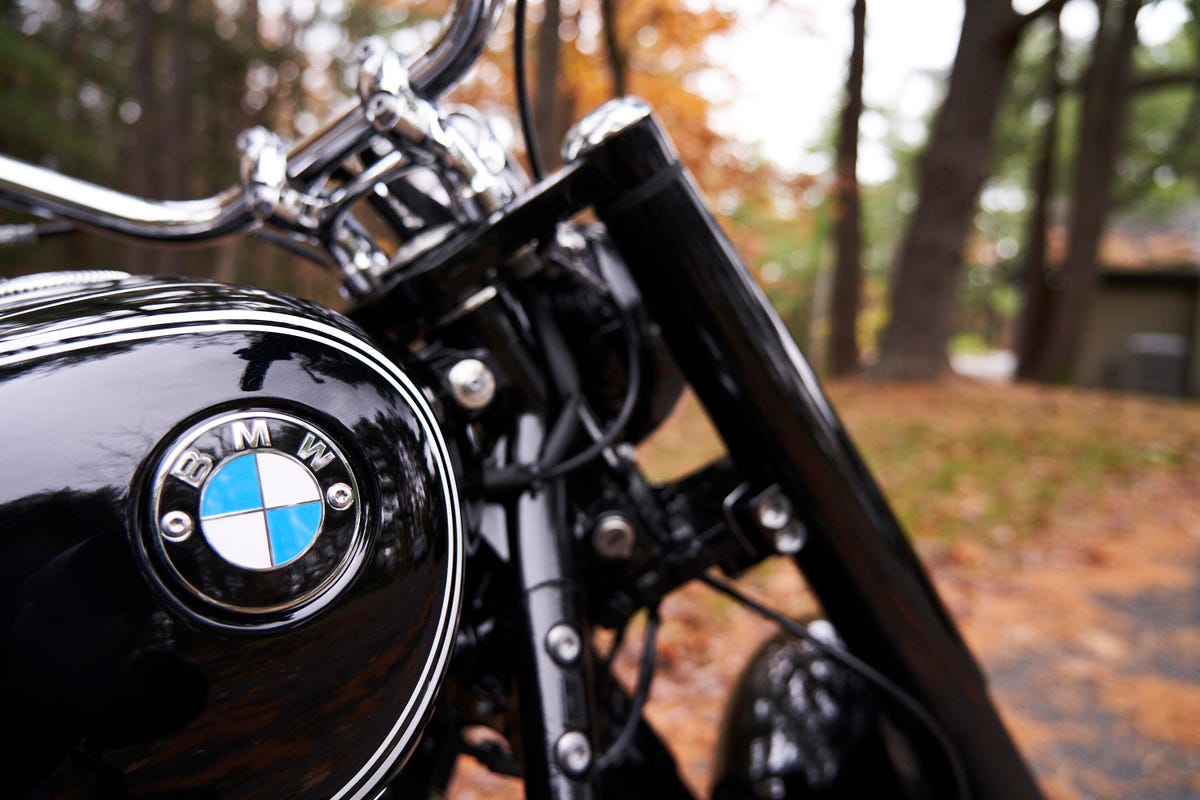
Enlarge Image
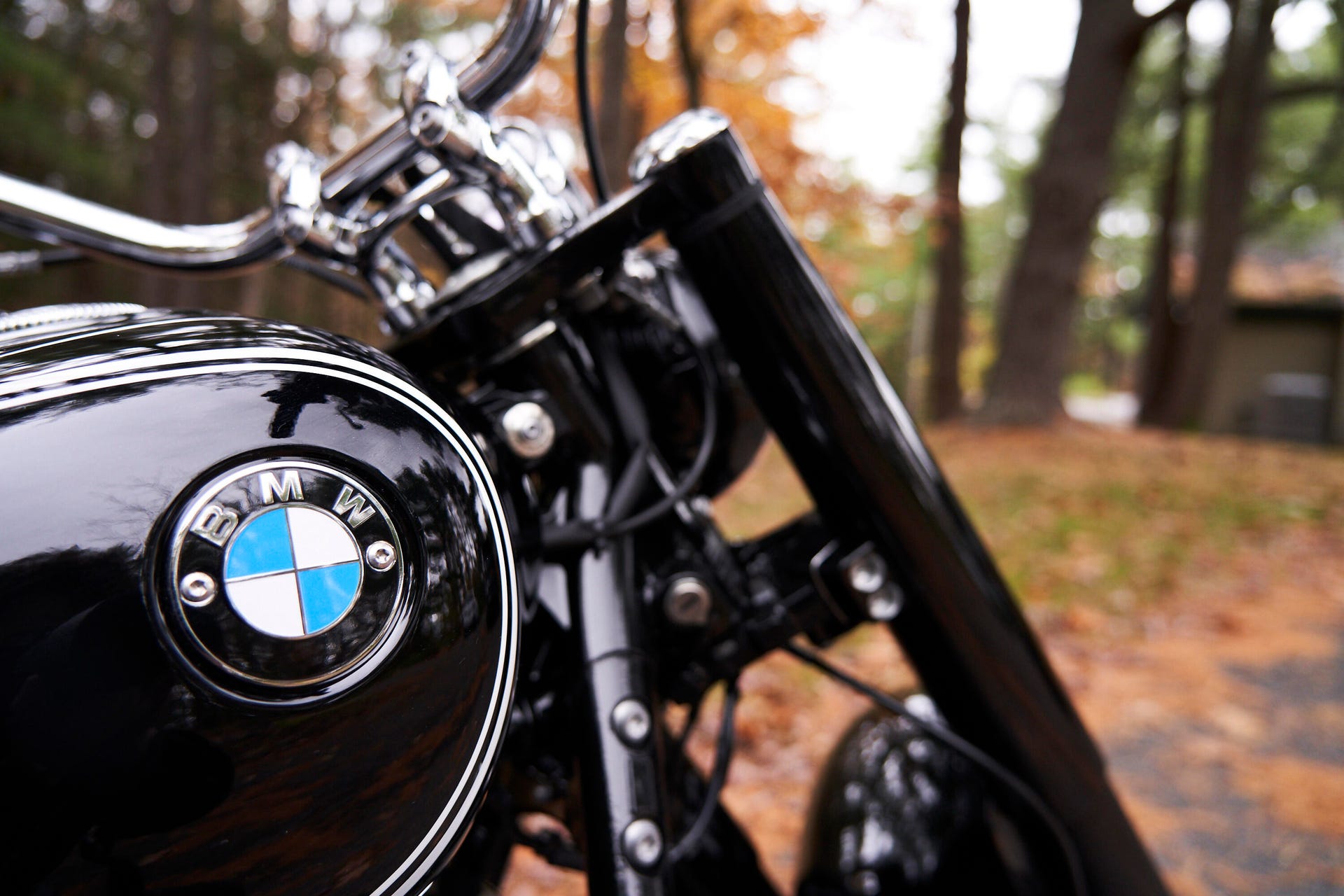
Look as close as you like from any angle, visually this bike does not disappoint.
The throttle response is good and this is a bike better driven with torque than power. Though there’s a digital tachometer available within the tiny LCD nestled inside the speedometer, it isn’t needed. When the vibration gets so bad the mirrors are blurring and your fingertips start going numb, it’s time to grab the next gear.
The ABS-equipped brakes are remarkably good and the six-speed transmission is so snappy and responsive it actually caught me by surprise. The R18 snicks into the next gear with the sharpness of a sportbike. There’s an optional reverse here, too, something I’d call a necessity on a rig this large, but it is rather less easy to engage. This R18 actually uses its starter, an engagement process requiring you reach down and find a small lever next to your left knee before pressing the starter button. It’s nowhere near as cleanly integrated as that on the Honda Gold Wing.
Indeed, moving the R18 around a parking lot is a real chore, where it very definitely feels its weight. Up to speed, though, and it’s a charming ride. Once you get the rear shock’s preload dialed in the bike Hoovers up road imperfections and is a great companion for leisurely rides. On its sharpest throttle response (your options are Rain, Roll and Rock), it’s even reasonably sprightly. It isn’t, however, one of those magic machines like the Gold Wing that hides its weight in the corners. On the R18, the pegs start dragging at the first hint of aggressive cornering. You’re always well aware that you’re astride something substantial, something that feels most at home at speed on long runs. Sadly, however, there’s a problem that has me eager to climb off after less than an hour at a time.
The R18, you see, is a literal pain in my ass. The bike is understandably festooned with BMW logos, plus “Berlin built” graphics, but some questionable soul decided to put a big, metal “BMW” on the saddle. It’s positioned in the perfect place to press against my tailbone. There are multiple seats available, but as far as I can tell all of the factory units contain this unfortunate and unnecessary bit of branding. You may need to budget a little extra for an aftermarket saddle depending on the shape, size and sensitivity of your posterior.
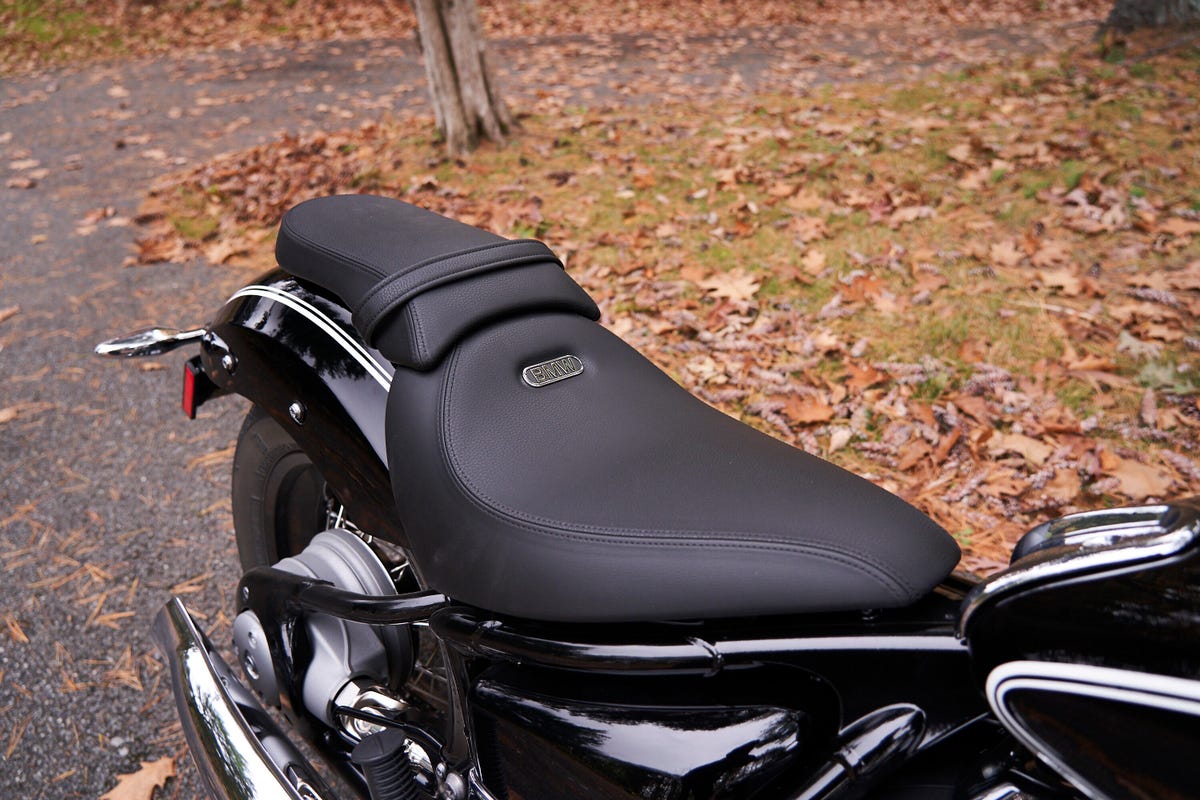
Enlarge Image
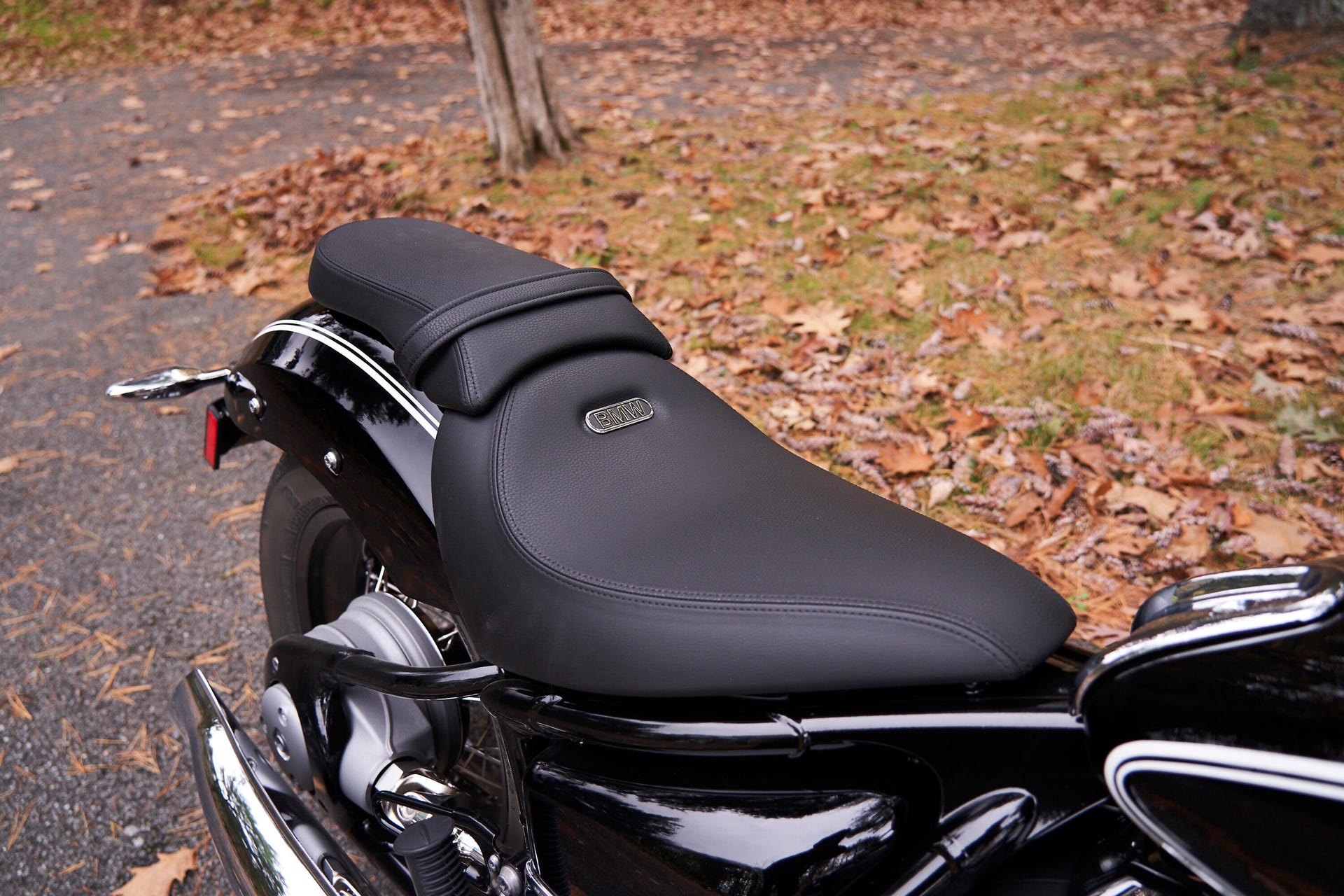
Seriously, who thought this was a good idea?
You’ll need a healthy budget regardless. The starting price of a BMW R18 is $17,495. What you see here is a First Edition bike, which adds that necessary pinstriping and much of the chrome. It also has the Premium Package, adding in the reverse function plus some other niceties, and the Select Package, including an alarm and heated grips. Add another $250 for the slender passenger seat and you’re looking at $22,265 after a $695 destination fee. And that’s before you delve into the dozens and dozens of machined, polished, chromed and otherwise bespoke components that can be spec’d out to provide the perfect amount of visual flair to match your style.
It’s a configurator that I confess I spent a fair bit of time pondering well before I was given the opportunity to test this bike. I was so utterly smitten by that initial concept I had serious thoughts about ordering one myself. Now that I’ve had what amounts to an extremely extended test ride, I’m left with mixed feelings. The R18 is stunning to behold and I could go on for days calling out the throwback details — the wire wheels with black hoops, the finned nuts on the exhaust, the classic single round headlight… I couldn’t help but grin every time I looked at the thing and, on the move, the package makes me feel incredibly special. However, the bike itself rides like just another cruiser, and I’d hoped for more. When Ducati built a cruiser, the Diavel, it was undeniably different than anything else on the market. I didn’t know what to expect from a BMW cruiser, but I certainly hadn’t expected it to feel so American.






